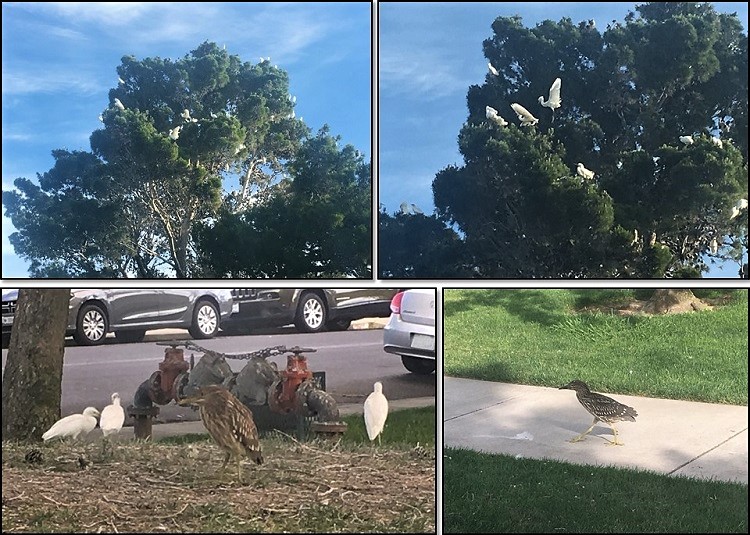Taxon of the Week: Ardeids
Ardeidae is a family of wading birds that includes herons, egrets, and bitterns. These birds are often characterized by their long bills, necks, and legs. They forage predominantly on aquatic animals including amphibians, fish, crustaceans, and mollusks. Additionally, some birds can be found foraging for small mammals, reptiles, and insects in grassy fields.
When the breeding season arrives, most Ardeids, excluding bitterns, gather into colonies called rookeries or heronries. The males will begin nest building and displaying in attempt to attract a female. The birds will form monogamous pairs for the season and take turns incubating eggs, brooding chicks, and foraging. They can lay 2-7 eggs depending on the species. During feedings, nestlings compete for provisions brought in by the parents. In years when food is limited, competition among nestlings increases and can result in aggression and siblicide. Nestlings may also behave aggressively toward nestlings in adjacent nests.
One of our very own Environmental Scientists has been volunteering with the Audubon Canyon Ranch  Heron and Egret Monitoring Project to assist in their effort to monitor Ardeid colonies in the Bay Area. At a snowy egret (SNEG, Egretta thula) and black-crowned night-heron (BCNH, Nycticorax nycticorax) rookery in a residential park in Fairfield, she monitors and records the heron behavior and nesting success on a weekly basis. The flexible branches of the nest trees and the high winds of Fairfield plus the aggressive nestling behavior result in numerous chicks falling from nests. The survivors get loaded into cat carriers by volunteers and are shuttled to
Heron and Egret Monitoring Project to assist in their effort to monitor Ardeid colonies in the Bay Area. At a snowy egret (SNEG, Egretta thula) and black-crowned night-heron (BCNH, Nycticorax nycticorax) rookery in a residential park in Fairfield, she monitors and records the heron behavior and nesting success on a weekly basis. The flexible branches of the nest trees and the high winds of Fairfield plus the aggressive nestling behavior result in numerous chicks falling from nests. The survivors get loaded into cat carriers by volunteers and are shuttled to  International Bird Rescue in hopes that they will recover and return to the rookery next year.
International Bird Rescue in hopes that they will recover and return to the rookery next year.
California has seven native Ardeid species: great egret, snowy egret, great blue heron, black-crowned night-heron, green heron, American bittern, and least bittern. We have one naturalized species: the cattle egret, which is native to Africa. All these species, except for the green heron and cattle egret, are tracked by the CNDDB. Be sure to fill out an  Online Field Survey Form if you come across a nest site!
Online Field Survey Form if you come across a nest site!

Top Left: One of the many trees used by the Fairfield rookery. The white birds are the SNEG. For every SNEG in the photo, there is likely a black and white BCNH adult or brown and white BCNH juvenile present but blending in with the tree. Top Right: Closer image of SNEG. Bottom Left: Fledglings under one of the nest trees – 3 SNEG and 1 BCNH. BCNH are known to have a high tolerance for disturbance as is evident in the proximity of the rookery to homes, traffic, and park-goers. Bottom Right: BCNH fledgling on park sidewalk.